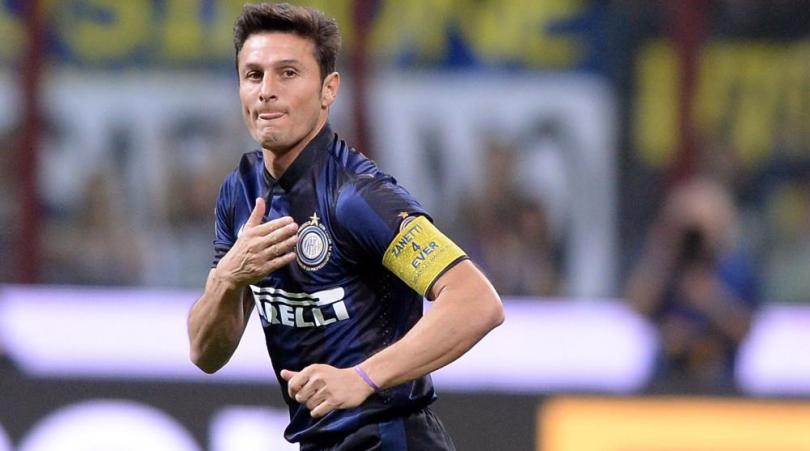Michael Cox: How Barça have clearly evolved – yet still manage to dominate Europe’s best
Luis Enrique’s side have one foot in the quarter-finals after their first-leg victory over Arsenal, which proved another example of the Spanish champions’ development…
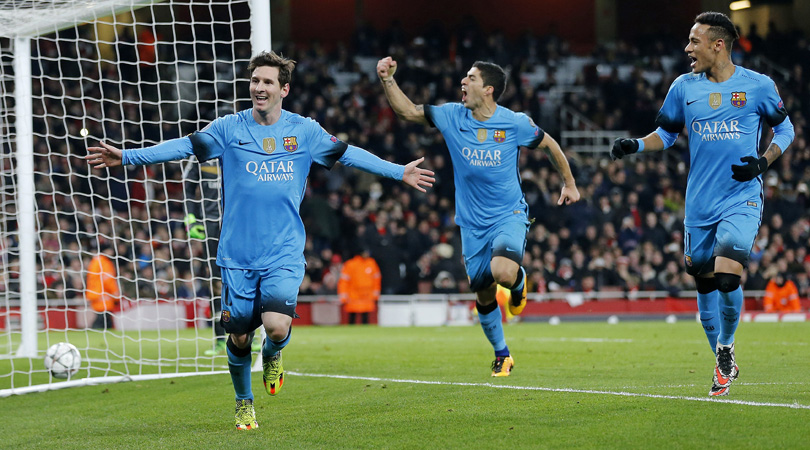
In his post-match press conference after Arsenal’s 2-0 defeat to Barcelona, the Gunners' boss Arsene Wenger was particularly frustrated at the way his team conceded the opening goal at the Emirates Stadium.
“We lost the goal in the period of game when [we were] looking better,” Wenger complained. “We lost a goal in a way we knew we couldn't afford.
“It's disappointing to give them a goal like we did on the first goal; we are guilty and have no excuse for that... we knew not give them a goal on the counter-attack; that is when they are most dangerous.”
It was an unusually honest and blunt assessment from a coach often reluctant to talk about specific incidents and defensive mistakes – but the last sentence is perhaps particularly significant when considering Barcelona’s style of play.
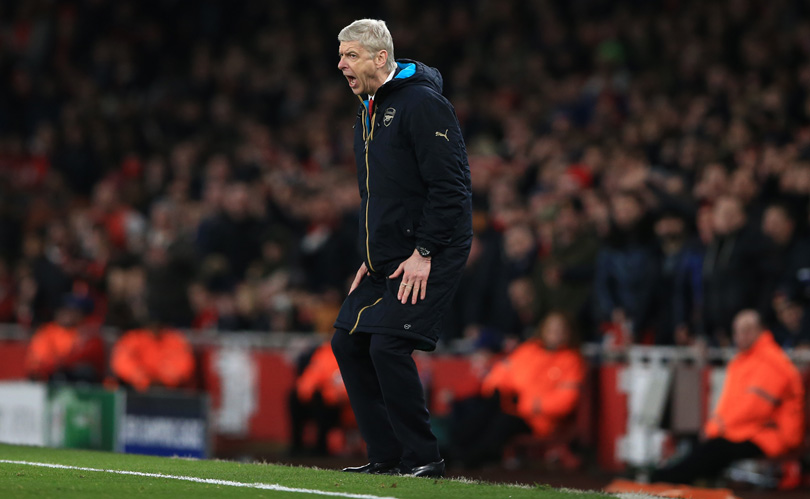
Wide boys
The second significant change is Barça’s use of possession, and their tendency to concentrate on playing the ball down the flanks
Previously, the Catalans were pure possession hoarders, with inspirational midfielder Xavi often deliberately slowing down moves, and let the opposition get back into position before concentrating on breaking them down gradually.
That’s only the first significant change in Barcelona’s play under Luis Enrique, however. The second significant change is Barça’s use of possession, and their tendency to concentrate on playing the ball down the flanks.
Get FourFourTwo Newsletter
The best features, fun and footballing quizzes, straight to your inbox every week.
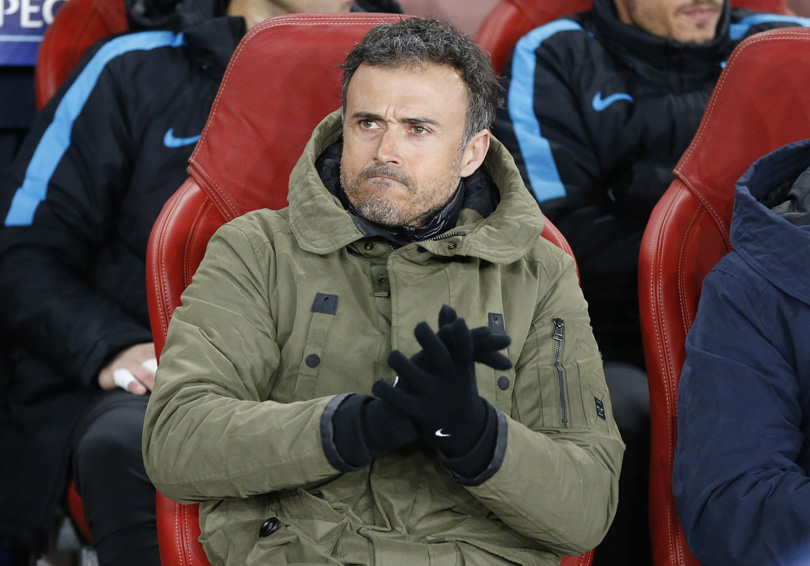
Because Pep Guardiola prioritised central midfield dominance over everything else, Barcelona packed players into that zone, and their passing usually flowed into the centre quickly. Now, they look wide.
Barcelona’s passing patterns from defence demonstrate this effectively, when considering the most frequent recipient of the passes played by each player. For example, take the distribution of left-sided centre-back Javier Mascherano, who often looks to slip the ball out wide to left-back Jordi Alba. The same pattern is repeated on the opposite side: Gerard Pique looks up and plays the ball to Daniel Alves.
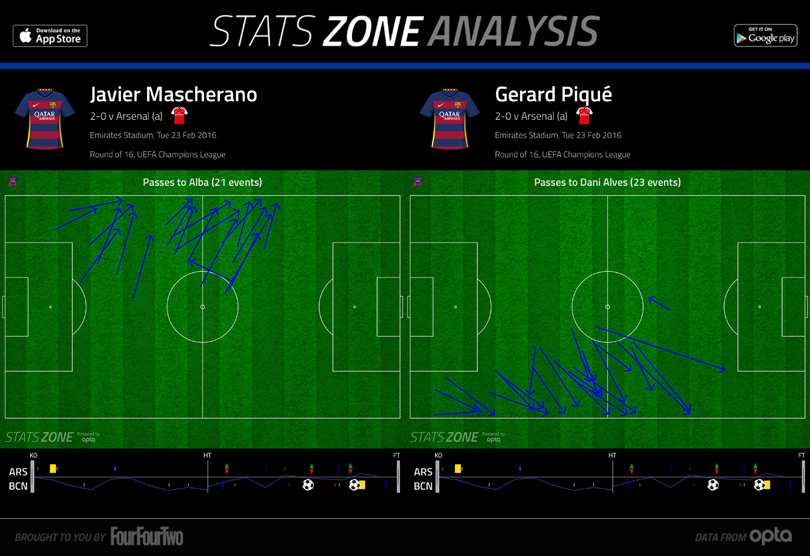
This might not seem particularly unusual, but it’s interesting to compare the situation with Barcelona’s equivalent performance at the Emirates Stadium five years ago.
Then, Pique played most of his passes to Eric Abidal, who most frequently looked to Sergio Busquets, who generally transferred the ball onto central midfield partner Xavi, who then looked for Daniel Alves. The ball moved from Pique to Alves through three other players. Now, it happens straight away.
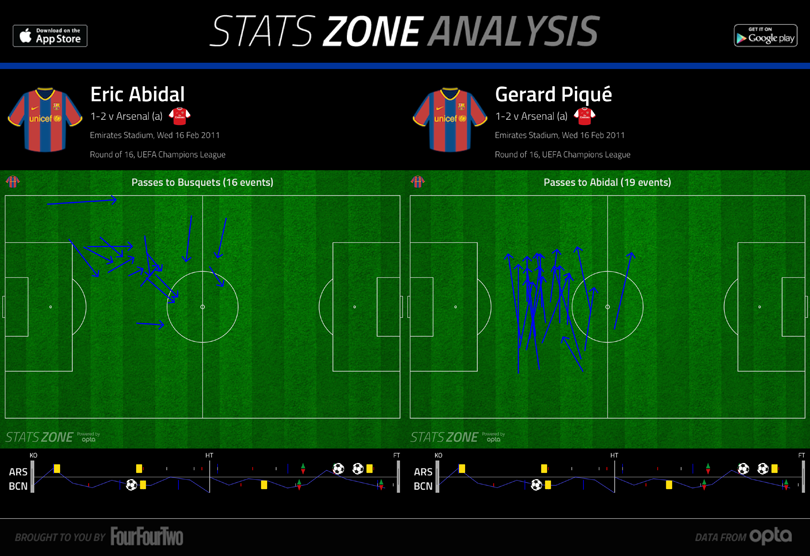
Throwback
It’s also interesting to examine what Barcelona do next, when the ball is with their full-backs. The answer is quite simple – the full-backs look to combine with the wide forwards, with Alves’ most frequent recipient of passes being Lionel Messi, and Alba playing the ball more often to Neymar.
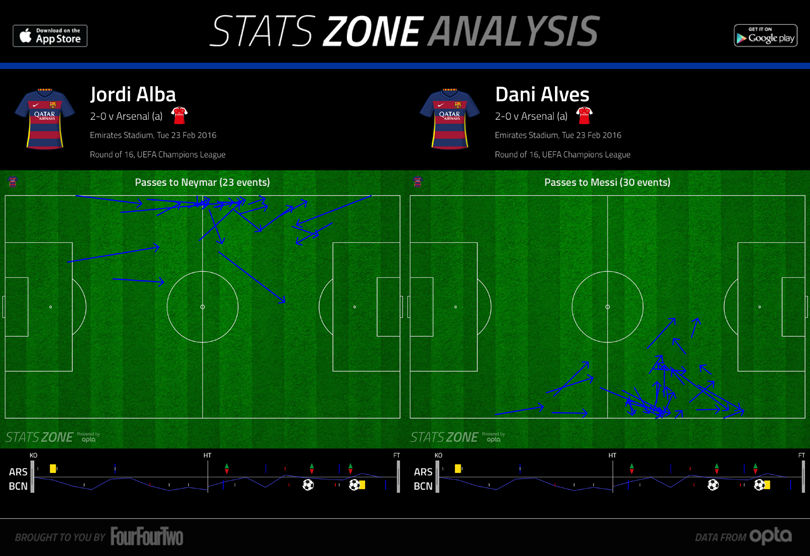
That means Barcelona easily supply their two wide forwards, who are both capable of drifting inside. They can dribble, shoot – but also create too, and act as playmakers from either flank.
This is a significant change from Barcelona’s system under Guardiola in 2010/11 when the wide players were usually Pedro and David Villa, wide forwards who looked to go in behind the opposition's backline for through-balls rather than moving inside to create. The 2015 version has Luis Suarez making those kind of runs, rather than Messi coming deep as a false nine.
One of the most interesting things about Barcelona over the past decade is how they’ve continued to evolve, despite broadly using the same system
The other difference is the role of the midfielders either side of Sergio Busquets. Andres Iniesta featured in both the 2011 side and the current team, but whereas he used to alternate positions with Xavi and sometimes move into the attacking line to exploit space, now he stays wide, forming triangles with Alba and Neymar.
Again, he helps the passing to flow down the flanks, rather than centrally – his passes received now suggest a left-sided midfielder, rather than a central midfielder.
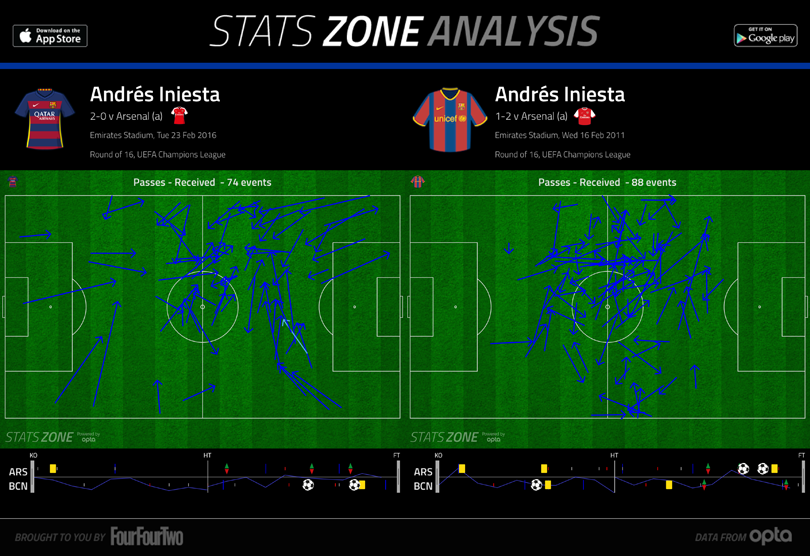
One of the most interesting things about Barcelona over the past decade is how they’ve continued to evolve, despite broadly using the same system and many of the same players.
With the emphasis upon width and attacking at great speed, the latest incarnation of Barcelona is more like the 2006 and 2009 European Cup-winning sides, rather than Guardiola’s side of 2011.
Analyse Arsenal 0-2 Barcelona yourself with Stats Zone
More features every day on FFT.com • Analysis
STATS ZONE Free on iOS • Free on Android
